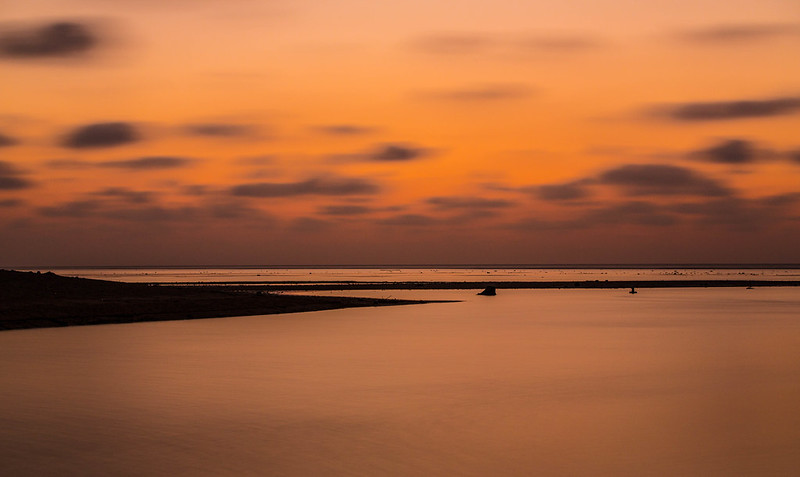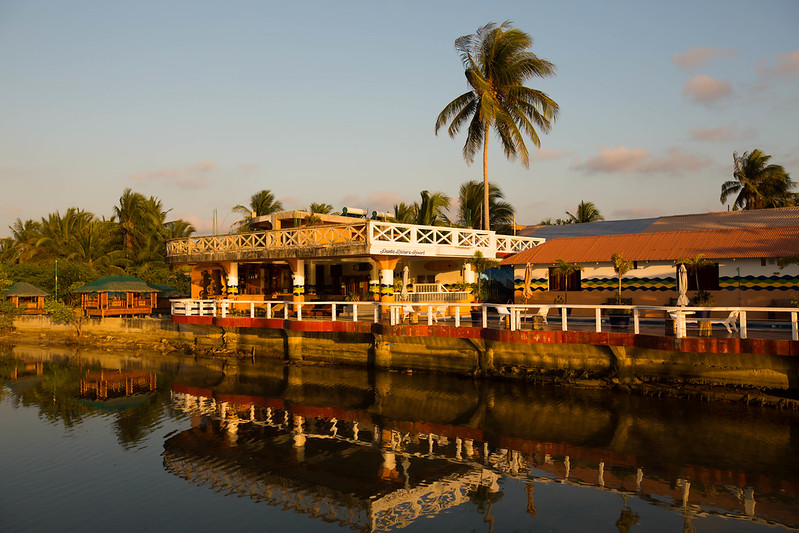1-4 do nothing for me, there is no subject, no story, no visual journey, no aesthetics, no reward for scanning the photo, no details (a lot of landscape work is about the details, rewarding viewers who sit and ponder the image and find small features that make the bigger image have impact and depth.)
The cpositions of these 4 just don't do much. In general a horizon across the middle is not interest and is best avoided, concentrating n either the sky or ground. Common Exceptions include reflections where the symmetry emphasizes the reflection, which is why photo 5 works much better, plus you have some great lighting (but there are still some compositional issues, in reflection the bottom is clipped, and the palm tree has an uncomfortable unbalanced location)
A key for most landscape photos is to have foreground interest, midground iterest and background interst, along woth an easy way to transition between these layers. A common and valuable compositional tool for cases is to get a visual path in the photo, something that will explicitly guide the viewer from foreground to background. Classic examples of these are roads, footpaths, rivers, hedgerows etc. This is shown in photo 6 where a footpath guides the viewer at least a partially through the layers. #6 has both foreground and background, adding depth. The people at a sense of perspective as well as a dynamic and living aspect which always helps make the photo be more interesting.
#8 almost achieves this visual path with the dirt road but its angle doesn't easily lead to visual movement. If you stood dead center the symmetry and perspective would be great. Latent timely if you took a few steps to the right to emphasize the angle then you would add strong lines and dynamism. Hay pile on the left breaks compositional balance as well. Nice to have clouds in the sky.
#9 is very atmospheric, has nice details and has both foreground and background easy. The road tends to help move my eye into the scene where the river takes me further. Te car is an example of one of those small,details that rewards viewers who pause longer, and helps make the scene more lifelike. I'm sure viewing a large print will reveal many interesting snippets.
10, dramatic sky is nice but I feel like I am missing the main subject. Took a me a second to see the builders on the roof, they would make for a great subject but they are too small for me. Dead space on the left. I feel something closer to show the workers would make a nice scene.
I highly recommend buying the book "The photographers eye"
 i want to know what i can do to improve my landscape skillsets
i want to know what i can do to improve my landscape skillsets





 i want to know what i can do to improve my landscape skillsets
i want to know what i can do to improve my landscape skillsets











 , love 6, 7 and 8, great vibrancy and cloud formations, also loving the beams of light in 7.
, love 6, 7 and 8, great vibrancy and cloud formations, also loving the beams of light in 7.

